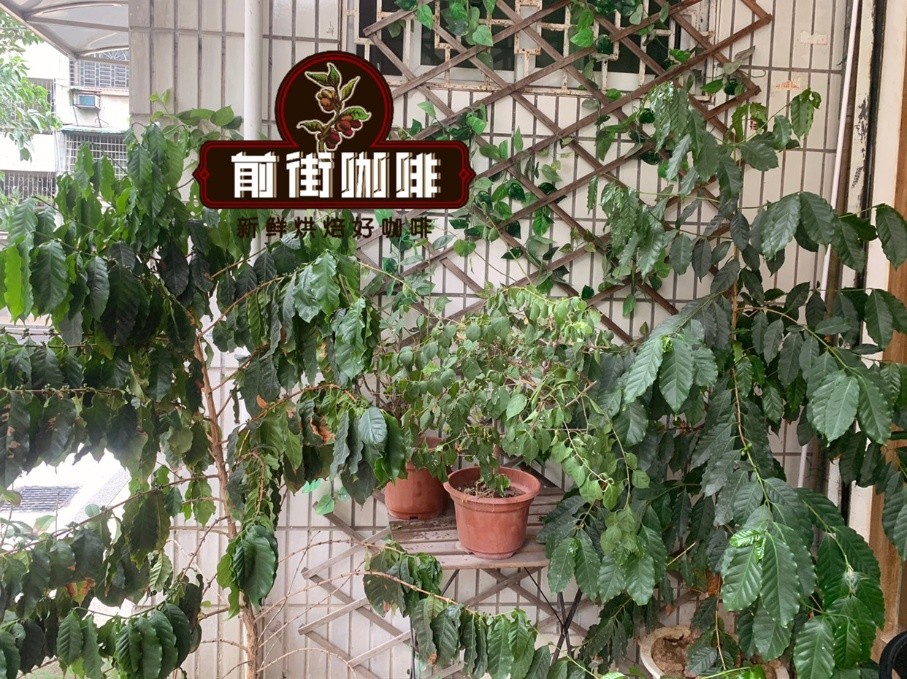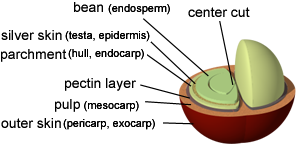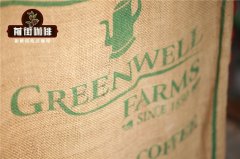Where did the coffee come from? How long does it take to grow? What do coffee beans and seeds look like?
Coffee is a morning drink for many people. Keep your curiosity about things. Have you ever thought about where coffee comes from?
It takes nearly a year for coffee to blossom to mature, while it takes about five years for coffee trees to fully bear fruit. Except for round beans, most coffee cherries contain two kinds of coffee beans. Round beans account for about 5% of the world's coffee, and cherries have only one coffee bean inside, which is a natural mutation. Many layers of coffee fruit fall off before they become fragrant brown coffee beans. In order to make full use of every bean, every step of processing coffee fruit requires attention to detail and skill. The most important factor in determining the quality of coffee is the precautions during post-harvest processing. a mistake can have a serious impact and sometimes even destroy the whole batch of coffee. Today we will mainly introduce the composition of coffee beans to you.

Beans or seeds-coffee seeds or beans consist of silver skins, endosperms and embryos. Coffee seeds (beans) vary in size; however, they average 10 mm long and 6 mm wide. Although the beautiful green coffee beans or seeds are still in the cherries, they are perfectly roasted and ripe and become the coffee we know and love.
Parchment or endocarp-endocarp or parchment is the innermost layer of the peel and is the shell that surrounds coffee beans. It consists of three to seven layers of thick-walled tissue cells (fibrous cells, which are the main supporting cells of plants). Endocarp cells harden during coffee fruit ripening, thus limiting the final size of coffee seeds or beans. In Arabica coffee, the average weight of parchment with a moisture content of 11% is about 3.8% of the total weight of coffee fruit (Wilbaux,1961, cited from Bor é m, 2008).
Mucus or mesocarp-mesocarp, also known as mucus, is the pulp of coffee fruit. Although "pulp" can sometimes refer only to mesocarp, the term usually refers to the combination of exocarp and part of mesocarp removed during pulping. Pulp of coffee fruit-contains pectin-decomposing enzymes during cherry ripening, which break down the pectin chain to form an insoluble hydrogel rich in sugars and pectin (Borem,2008 year). This layer is kept dry during our semi-washing process.
Exocarp or exocarp-exocarp, also known as pericarp, epidermis or exocarp, is the outermost layer of coffee fruit. It is formed by a single layer of dense parenchyma cells (with a thin primary wall, containing chloroplasts and capable of absorbing water). Due to the presence of chloroplasts, the color of the exocarp is green at the beginning of fruit development, and then disappears with fruit ripening (Castro and Marracini,2006 years). The color at maturity depends on the type of coffee, but the most common is red or yellow. The red skin color comes from anthocyanin pigment, while the yellow skin color is attributed to luteolin (Borem, 2008). In the early stage of fruit development, the pericarp is green. As the fruit ripens, it turns yellow, then orange, and then ripe red. This is dried with cherries to create our natural process.

Silver skin-Silver skin, also known as endosperm or spermoderm, is the outermost layer that wraps the seed. It is formed by the nucellus or central part of the ovule. Usually, some silver residue is retained on the pre-roasted coffee beans and falls off as a husk during the coffee roasting process. Silver skins can be worn off beans; however, it is generally believed that this will reduce the flavor of coffee. It has also been suggested that the presence of a large amount of silver on ground coffee is a sign that coffee is picked before it is ideally ripe. In some areas, silver skin may show a darker hue, in which case beans are called fox beans. Fox beans are not considered a defect.
Endosperm-endosperm is the main reserve tissue of seeds, which consists of only one kind of tissue, although the cells outside and inside the endosperm vary in oil content and cell wall thickness. The chemical composition of the endosperm is crucial because it is the precursor of the flavor and aroma of roasted coffee. The compounds found in the endosperm can be classified as water-soluble or water-insoluble. Water-soluble compounds are caffeine, trigonelline, nicotinic acid (niacin), at least 18 chlorogenic acids, monosaccharides, disaccharides and oligosaccharides, some proteins and minerals, and carboxylic acids. Water-insoluble ingredients include cellulose, polysaccharides, lignin and hemicellulose, as well as some proteins, minerals and lipids
Important Notice :
前街咖啡 FrontStreet Coffee has moved to new addredd:
FrontStreet Coffee Address: 315,Donghua East Road,GuangZhou
Tel:020 38364473
- Prev

What kind of dessert would you like to have a black coffee latte cappuccino? Ice cream, nuts and coffee?
Everyone knows that it is very important to match your own red wine (or other wine) with the right dessert when drinking. Drinking coffee should also choose the right dessert, it can balance the taste of coffee. Although Qianjie does not sell desserts and focus on coffee, this does not affect people's love of desserts. Whether it's chocolate doughnuts or lemon pie, it's undeniable.
- Next

Do the advantages and disadvantages of drinking coffee often lead to a longer life? Three cups of coffee a day can help prolong life?
Drinking three cups of coffee a day may help prolong life, according to a study of nearly 500000 people from 10 European countries. The study, published in the Annals of Internal Medicine, shows that drinking an extra cup of coffee can prolong a person's life even if it contains no caffeine. But skeptical experts point out that it is not necessarily because coffee has a protective effect.
Related
- Detailed explanation of Jadeite planting Land in Panamanian Jadeite Manor introduction to the grading system of Jadeite competitive bidding, Red bid, Green bid and Rose Summer
- Story of Coffee planting in Brenka region of Costa Rica Stonehenge Manor anaerobic heavy honey treatment of flavor mouth
- What's on the barrel of Blue Mountain Coffee beans?
- Can American coffee also pull flowers? How to use hot American style to pull out a good-looking pattern?
- Can you make a cold extract with coffee beans? What is the right proportion for cold-extracted coffee formula?
- Indonesian PWN Gold Mandrine Coffee Origin Features Flavor How to Chong? Mandolin coffee is American.
- A brief introduction to the flavor characteristics of Brazilian yellow bourbon coffee beans
- What is the effect of different water quality on the flavor of cold-extracted coffee? What kind of water is best for brewing coffee?
- Why do you think of Rose Summer whenever you mention Panamanian coffee?
- Introduction to the characteristics of authentic blue mountain coffee bean producing areas? What is the CIB Coffee Authority in Jamaica?

